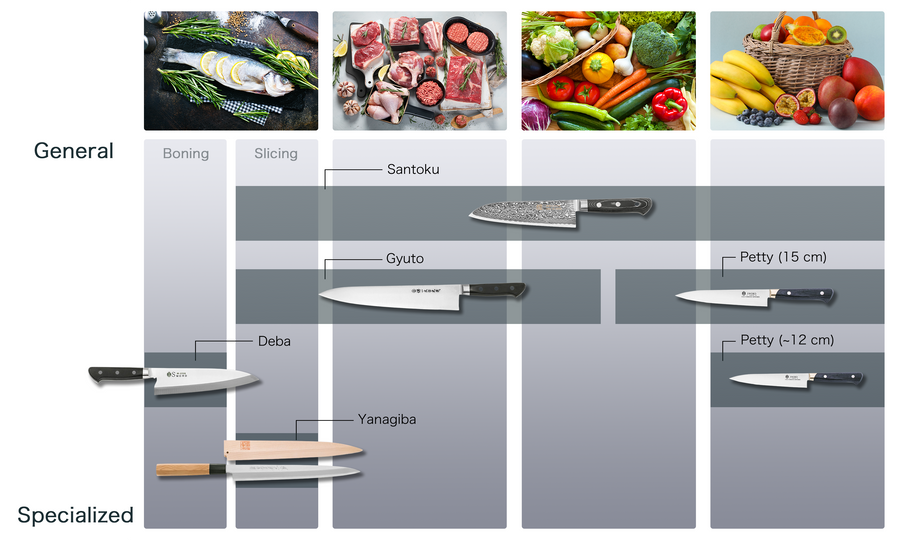Western-Styled Knives

Sakai Ichimonji Mitsuhide makes and sells worldwide a variety of high-end Western-style knives in Japan by hand such as gyuto, santoku, petty, and more, all available with worldwide shipping.
What are Western-Style Knives
The blades of traditional Japanese specialty knives such as Yanagiba and Deba are single-edged, while the Western-style knives such as Gyuto and Petty are double-edged. Western-style knives are ideally suited to cutting and slicing meats such as beef, chicken, and pork.
As the popularity of Western cuisine grew in Japan during the 19th century, local knife makers began making Western-style knives to meet this demand. They adapted the traditional techniques of Japanese swordsmithing and knife-making to focus on creating a different style of Western-style knife; one that is much harder and thus sharper. As a result, superior kitchen knives were born, becoming desired by top chefs worldwide.
Western-style knives typically feature a "full tang" blade with two handle scales, and may also integrate a metal bolster. Their handles usually require less maintenance and are often chosen by professionals who must comply with strict hygiene regulations. Various blade types exist in Western-style knives, each designed for specific cutting tasks and purposes.
Types Classified by Purpose
Small knives for cutting vegetables and fruits.
For cutting meat. They can also be used multi-purposely.
For cutting meat and sashimi. Their blades are narrow so they can be used for fine work.
Japanese-style boning knives. They are generally used for butchering poultry and cutting meat off the bone.
Recommended Stainless Steel Knives ーOur Popular Series-
For people who prioritize ease of sharpening.
The blade of the 8A-N Series is made from AUS-8, a popular stainless steel for Japanese knives. It's easier to sharpen and slightly tougher than other high-end stainless steels, making it less likely to chip during use. Proper quenching techniques improve the cutting ability and edge retention of our AUS-8 series while keeping the knife economical. This series is a great choice for newcomers to knives made from Japan thanks to its low maintenance needs.
For people who prioritize long-edge retention.
The blade of the G-LINE Series is made from VG-1, a stainless steel made from purified materials and high-end steelmaking technology. Made with care and without cutting corners, this series has high hardness, sharpness, and long edge retention—all while keeping good cost performance. As it specializes in long-term usage, it is recommended for long-time cooks and those who do not want to sharpen so often.
For people who want "no compromises". It is easy to sharpen and has excellent edge retention.
The blade of the FV10 Series is made from VG-10 stainless steel, a premium evolution of VG-1 steel. Our FV10 is manufactured with a unique tempering process, which retains superior hardness, sharpness, and edge retention levels. Furthermore, this long process makes FV10 easier to re-sharpen than our VG-1 counterpart. As a result, this series has the best quality balance that stainless steel knives can have.

How to Choose a Japanese Kitchen Knife for Beginners
Japanese kitchen knives are famous for their design, history, and cutting performance. This guide will help you select the best knife for your needs.































